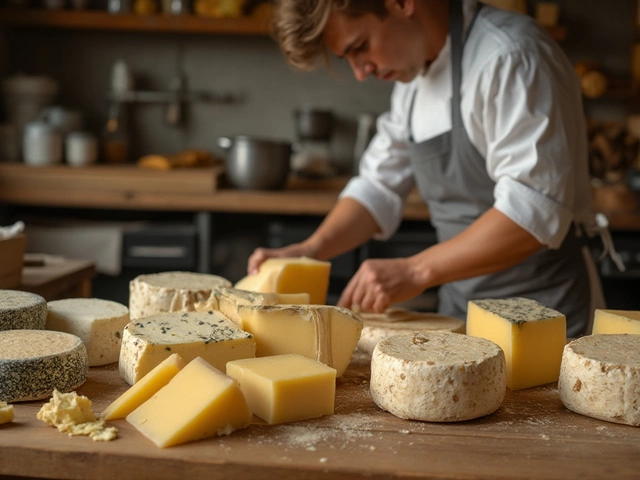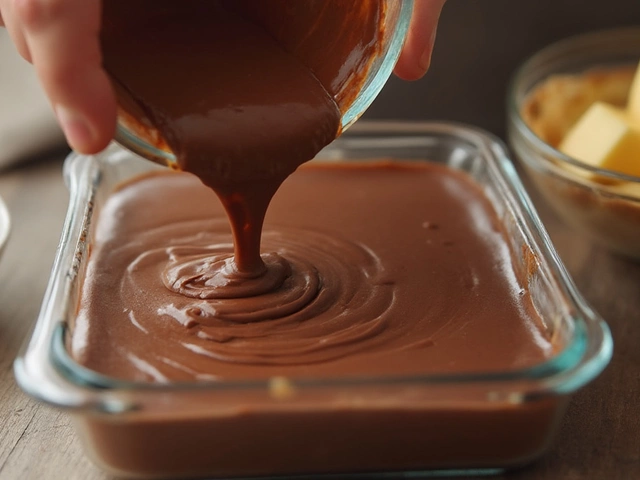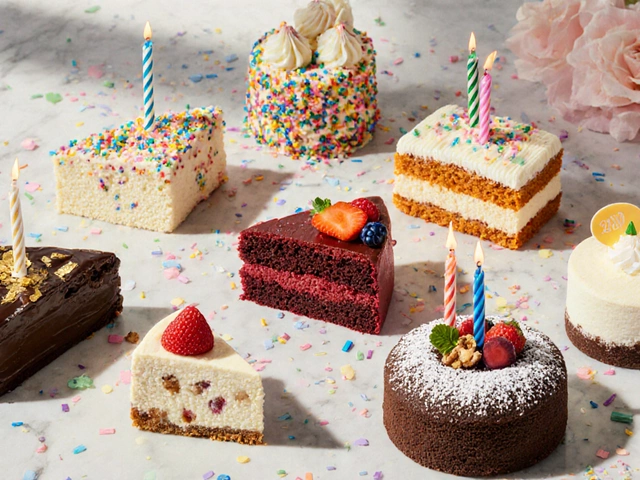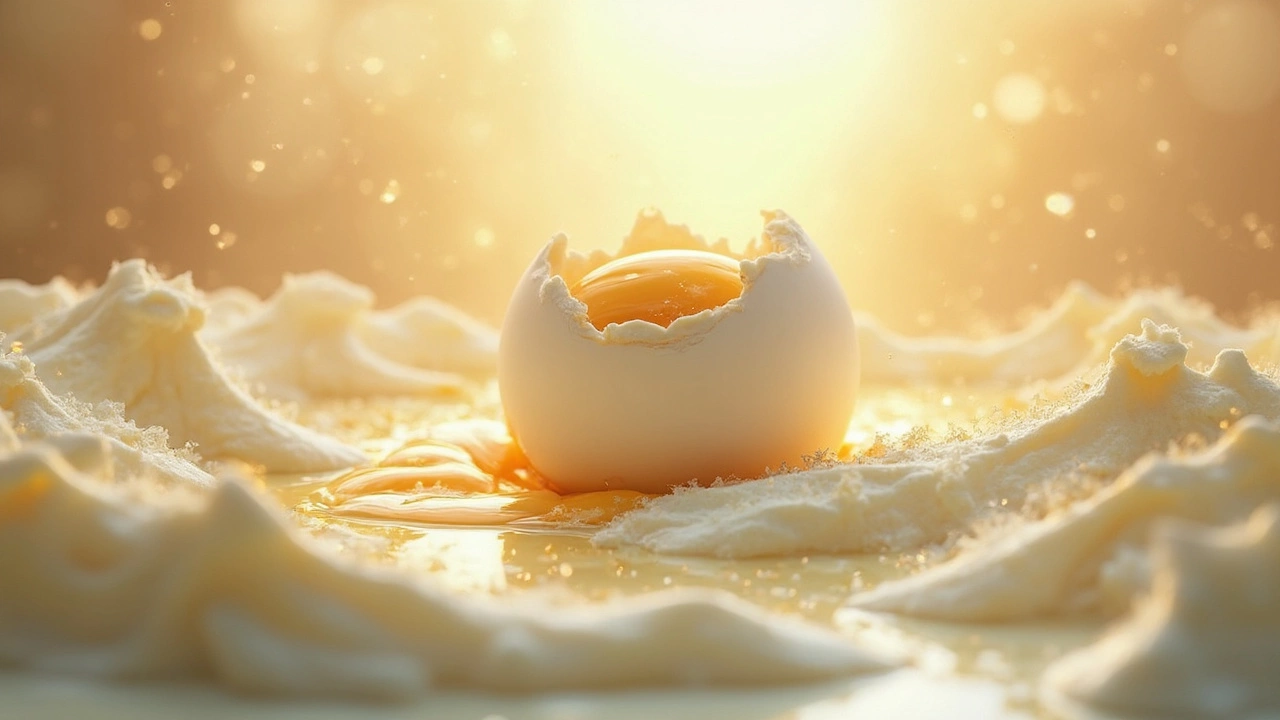
Ever wondered why your cheesecake recipe asks for eggs? It's more than just tradition or a random pick. Eggs play a starring role in cheesecake baking, working as the glue that holds everything together. They bind the ingredients in a creamy, delicious symphony. But it doesn't end there.
Eggs are the secret to getting that perfectly lush, smooth texture that just melts in your mouth. When you mix eggs into the batter, they help set the cheesecake, giving it structure without making it too firm. Basically, they help strike that perfect balance between creamy and firm. So next time you're mixing cheesecake batter, remember, those eggs aren't just extras—they are essential.
The Role of Eggs
In cheesecake recipes, eggs are more than just another ingredient. They are like the secret agents of the baking world, working undercover to perform several crucial jobs. First up, they bind. When you mix eggs into your batter, they help glue all the ingredients together, creating that smooth and cohesive texture we all love.
But binding isn't the only party trick eggs have. They also play a major role in setting the structure of the cheesecake. As the cake bakes, the proteins in the eggs coagulate, firming up the mixture without turning it rubbery. This means you get that perfect creamy finish that holds its shape when sliced.
Moreover, do you know that eggs affect the color and flavor too? Yep! They add a subtle richness to the taste and give the cheesecake a beautiful golden hue. If you've ever noticed a lovely yellow tint on top of a baked cheesecake, you can thank the eggs for that.
How to Get It Right
When baking cheesecake, it's not just about tossing the eggs in. Here are a few handy tips:
- Temperature Matters: Always bring your eggs to room temperature. This helps them incorporate better, ensuring an even texture.
- Don’t Overbeat: Mixing eggs too much can introduce air, leading to cracks. Be gentle when folding them into the batter.
- Quality Counts: Use fresh, high-quality eggs for the best results.
So, the next time you're baking, remember, the role of eggs isn’t just about sticking things together. They're working hard to give you that slice of perfection!
Eggs and Texture
When it comes to cheesecake, texture is everything. Ever cut into a slice and got that silky smooth feel? Thank eggs for that. Eggs work their magic by transforming your batter from a runny mess into a luxurious filling. So, how do they do it?
In the oven, eggs coagulate, which means their proteins unfold and reconnect to form a delicate mesh. This gives the cheesecake its structure. But the aim is not to overcook them, as that can cause a rubbery feel. You want to get it just right, with a deliciously creamy texture that’s almost custard-like.
To achieve the perfect texture, mixing is key. Here's a quick tip: when you're incorporating eggs into your cream cheese mixture, do this gently. Over-mixing can whip too much air into the batter, leading to potential cracks on the surface. You want your cheesecake to be smooth, not full of bubbles!
Timing also counts. Baking at a lower temperature allows the eggs to cook slowly and evenly. Many bakers find that baking at around 160°C works wonders. And if you're wondering about water baths, they can really help stabilize the cooking process by keeping the heat even and preventing those dreaded cracks.
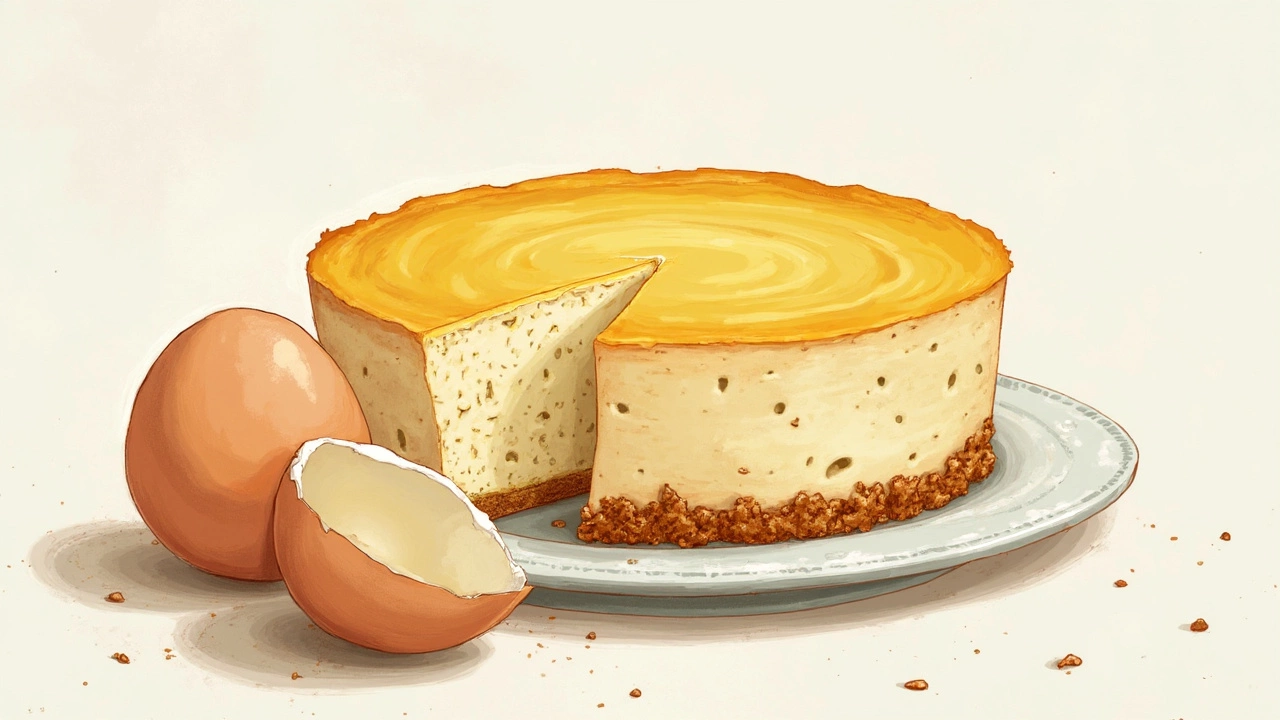
Eggs Enhance Flavor
When it comes to flavor, eggs work magic in cheesecake. You might think of them as the background singers in your favorite song—they might not be the star, but they sure do make the star shine brighter. Eggs bring richness to your cheesecake, enhancing the natural flavors of ingredients like vanilla, lemon, or even chocolate.
Why does this happen? Eggs, especially the yolks, contain fats that help carry flavors more effectively than water or milk. That means when you add vanilla extract to your batter, the eggs help disperse that flavor throughout the cake, making sure every bite is evenly delicious.
Balancing Sweet and Savory
Don't forget the eggs' ability to balance sweet and slightly savory notes. They keep the sweetness from becoming too overwhelming, letting the creamy cheese taste still come through. This is particularly important if you're playing with complex flavors or less traditional ingredients in your cheesecake.
What About Egg Variations?
Ever tried using duck eggs instead of chicken eggs in your cheesecake recipes? Duck eggs have bigger yolks, which means they can make your cheesecake even richer and more flavorful. Some bakers swear by them, saying the taste difference is noticeable, especially in baked goods where eggs play such a central role.
So, when you're whipping up your next batch of cheesecake, give a little nod to the eggs in your bowl. They're not just there to stick things together—they're enhancing every bite with flavor you wouldn't want to go without.
| Egg Type | Yolk Content | Flavor Impact |
|---|---|---|
| Chicken | Moderate | Rich, balanced |
| Duck | High | Ultra-rich, creamy |
| Quail | Low | Mild, subtle |
Egg Alternatives
Alright, what if you're out of eggs or maybe you're looking for a cheesecake recipe that's vegetarian or vegan-friendly? No worries, there are plenty of egg alternatives that work like a charm.
Common Egg Substitutes
For those who want to keep things simple, several alternative ingredients can replace eggs without compromising on texture:
- Applesauce: About 1/4 cup of unsweetened applesauce can replace one egg. Besides binding, it also adds a hint of sweetness and moisture.
- Yogurt: Another creamy option is plain yogurt, using 1/4 cup per egg. It keeps the cake moist and tender.
- Silken Tofu: Blend 1/4 cup of silken tofu until smooth for each egg. It's flavor-neutral, making it a versatile substitute in cheesecake recipes.
- Flaxseed Meal: Mix one tablespoon of flaxseed meal with three tablespoons of water. Let it sit for a few minutes to thicken; this mixture mimics the binding properties of eggs.
Commercial Egg Replacers
If you're into baking, stocking a commercial egg replacer in your pantry can be a game-changer. They come in powdered forms and are specifically designed to replace eggs in various recipes. Just follow the instructions on the package.
How Do Substitutes Affect Texture?
It's important to note that while these alternatives can do the job, they might create subtle differences in the texture or flavor. For instance, applesauce might make the cheesecake slightly denser, while tofu keeps it smooth but a bit heavier.
Now, why consider alternatives? Whether it's for dietary restrictions or you simply ran out of eggs, knowing these swaps can be handy. Try them out in your next baking adventure!

Pro Tips for Baking
Alright, let’s get into some solid tips to make sure your cheesecake is the talk of the town. Baking with eggs can seem straightforward, but a few tricks can make a real difference.
Tip 1: Room Temperature Ingredients
This might seem minor, but trust me, it matters! Always use eggs that are at room temperature. It helps them mix more evenly into your batter, creating that smooth texture everyone loves. So plan ahead and take them out of the fridge in good time.
Tip 2: Don't Overbeat
When mixing the batter, overbeating eggs is a no-no. It introduces too much air, which can cause cracks during baking. Mix them in just until combined, and you'll avoid those pesky fissures on top.
Tip 3: Slow and Low
Baking your cheesecake slowly at a low heat is key. A water bath can be a game-changer—simply place your cake pan inside a larger pan filled with hot water. It ensures even cooking and that luscious creaminess.
Tip 4: Test for Doneness
Not sure if your cheesecake is done? Give it a jiggle! The center should have a slight wobble—like Jell-O. If it's too jiggly, give it a bit more time. But remember, it’ll firm up as it cools.
Bonus Tip: Let it Cool Gradually
Once baked, resist the urge to take your cheesecake straight out of the oven. Let it cool gradually with the oven door ajar for an hour. Then pop it in the fridge. This step helps prevent cracks, keeping your cheesecake looking picture-perfect.

